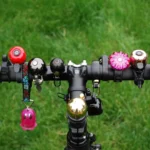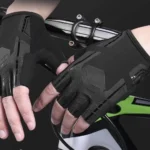
Ceepo, a brand synonymous with innovation and dedication, is marking its 20th anniversary this year. Founded by the visionary Nobuyuki “Joe” Tanaka in 2003, the journey of this brand began in Aicha, Japan. Joe, a triathlon enthusiast since 1990, embarked on a mission to redefine the biking experience.
In the early years, Joe found himself dissatisfied with the bikes available to him. This dissatisfaction served as the catalyst for a remarkable transformation. With unwavering determination, he decided to take matters into his own hands and craft a bike that would revolutionize the sport. In collaboration with specialized Japanese stores, Joe brought his vision to life, resulting in the birth of the first aluminum model in 1993.
Introducing Ceepo Rindo
Frame kit
At first glance, the matte military-green paintwork immediately catches the eye with its undeniable allure. The frame, constructed from carbon, boasts a striking appearance. Worth noting is that it does not adhere to UCI approval standards. Remarkably, it incorporates a total of fourteen inserts, strategically placed to accommodate supplementary saddlebags, mudguards, and bottle cages.
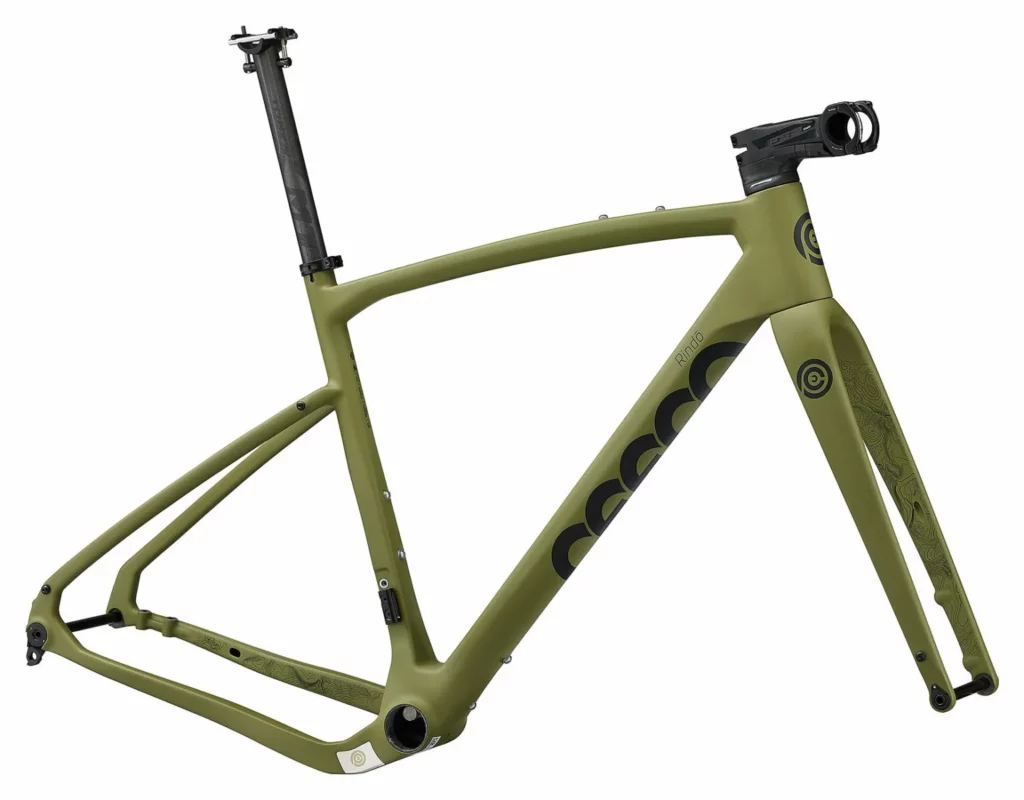
Unsurprisingly, the Japanese designers placed integration at the forefront of their priorities. Their relentless pursuit of aerodynamic excellence led them to ensure that virtually nothing protrudes from the frame. The outcome is a sleek and sporty frame design that embodies aerodynamic efficiency.
The cable routing, following a logical and internal path, was meticulously crafted in collaboration with FSA and TOKEN, further contributing to the bike’s streamlined and minimalist aesthetics.
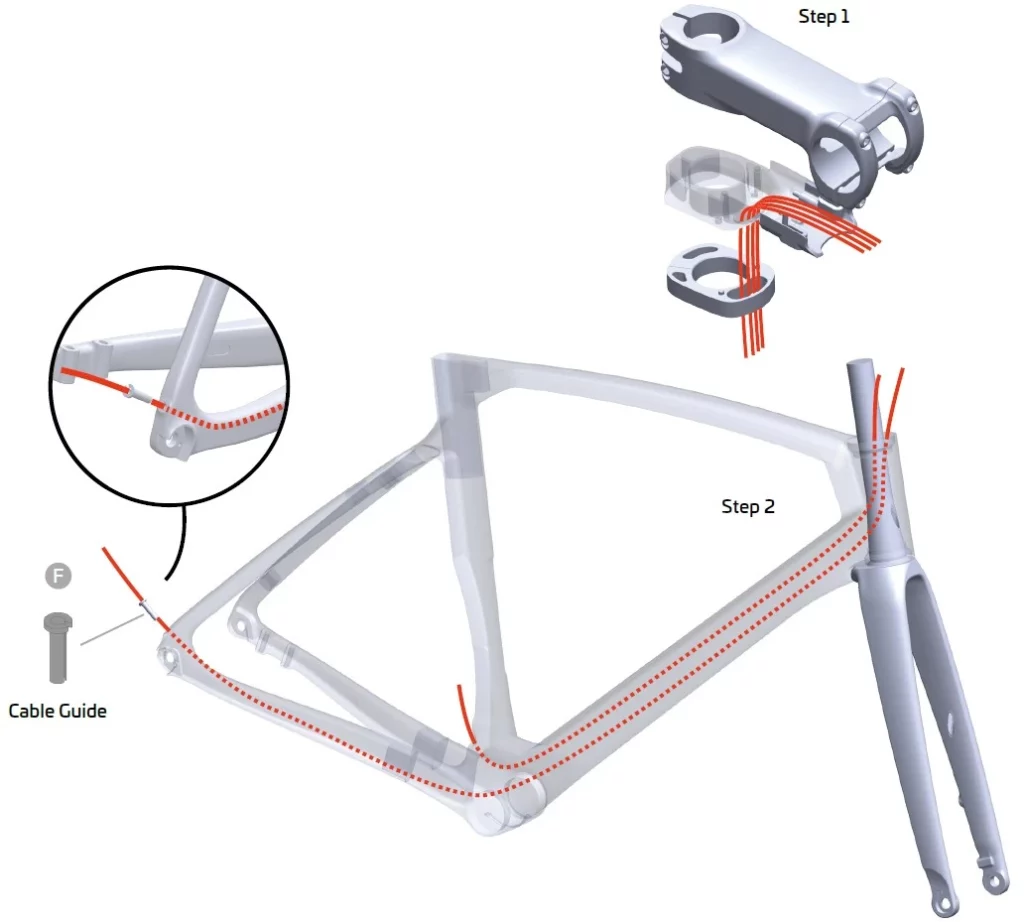
The bike’s main tubes, including the down tube and head tube, have adopted the aerodynamic “teardrop” profile design. This design choice aims to enhance airflow and minimize drag, especially when cruising at high speeds. Surprisingly, the seat tube clamping system retains a classic approach. Additionally, the seatpost maintains a traditional round-section design. I had anticipated greater innovation in this aspect, but Ceepo appears to have prioritized reliability and widespread compatibility instead.
Geometry
The geometry of the Ceepo Rindo aligns with contemporary sporting standards. Nevertheless, it struck me that the Stack value and head tube length appear relatively elevated when compared to certain competitors. Additionally, the steering angle adheres to a traditional 72.5°, akin to that of a road bike. Conversely, the 60 mm offset is notably greater. Furthermore, the seat tube angle leans towards the higher side, which suggests promising climbing capabilities, further augmented by the short 425 mm chainstays.
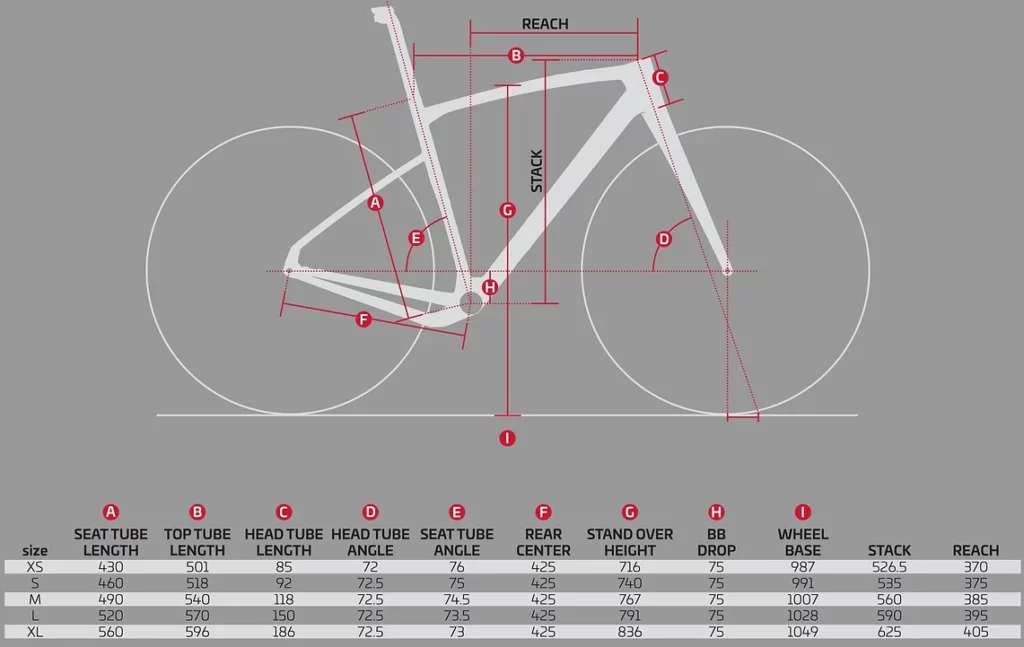
Concluding our examination of the geometry, it’s worth noting the seat stays’ low positioning on the seat tube. This feature is intended to offer vertical flexibility, and it has become increasingly prevalent in modern frame designs. Moving on, Ceepo specifies a maximum tire width of 45 mm for 700 wheels and 2.1 inches for 650 wheels, ensuring versatile compatibility. The frame supports both double and single-plate mounting options. In summary, it’s important to highlight the exceptional finish, exemplified by the meticulous silk-screen printing adorning the top tube.
Equipment
Shimano takes the lead in equipping the Ceepo Rindo with a comprehensive GRX-810 groupset, featuring a 40-tooth crankset and an 11-42-tooth cassette. While it initially comes with provisional wheels, we had the opportunity to enhance its performance by outfitting it with a pair of DT SWISS GRC 1400 SPLINE wheels. These carbon wheels boast a 24 mm internal width, making them an ideal choice for spirited Gravel riding adventures.
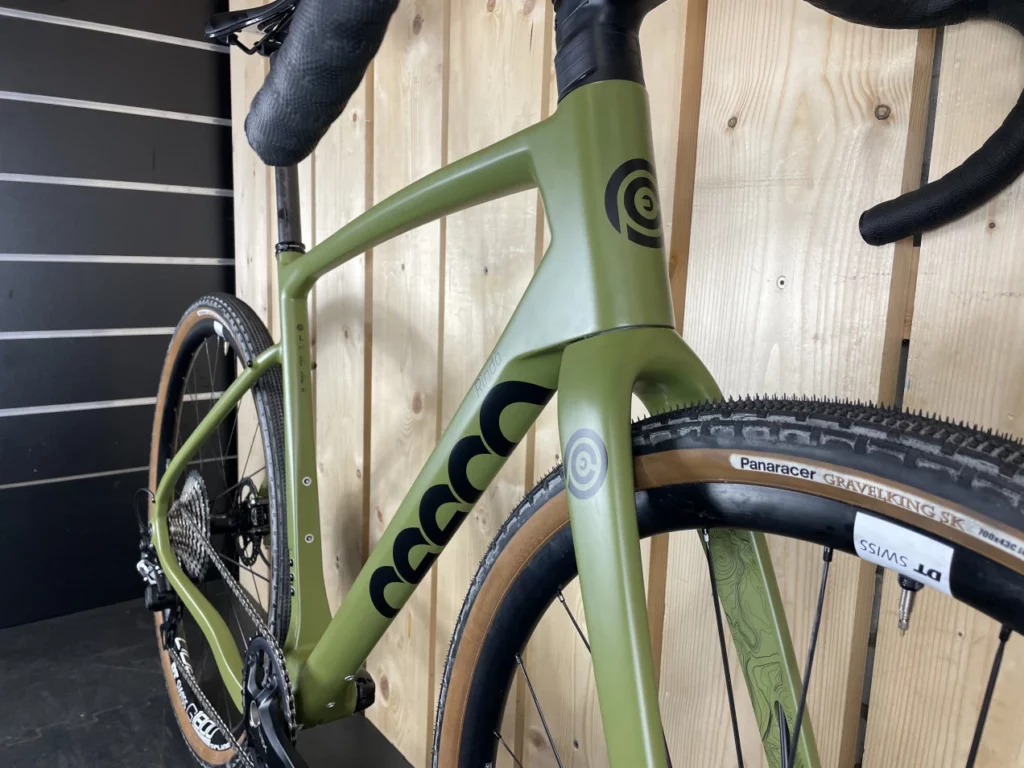
Returning to my impressions, the tires on the Ceepo Rindo deserve mention for their excellence. Specifically, they are IRC tires, available in 700×40 mm and 42 mm sizes, and we opted for a tubeless setup. If you’re interested in more details on this topic, you can revisit my previous IRC test in the BOKEN series.
Peripherals
To round off the details, the Ceepo Rindo boasts a blend of peripherals that enhance its sporty aesthetics. Notably, it features an FSA stem, a TOKEN carbon seatpost, and Ritchey handlebars crafted from aluminum. Together, these components contribute to the overall sporty appearance of the bike. The stem, in particular, is striking with its substantial build, and the impressive 1.5-inch pivot represents a noteworthy technical achievement.


Ceepo Rindo field test
For the sake of precision and objectivity, I’ll delve into two key aspects that prominently marked my evaluation of the Ceepo Rindo. My initial experience involved a four-day ride on Mont Ventoux, followed by additional cycling in the Var region. Prior to my testing, my friend Denis covered a distance of 330 km on the Var tracks with this bike. Altogether, the Ceepo Rindo underwent a rigorous evaluation, spanning a total of 600 km.
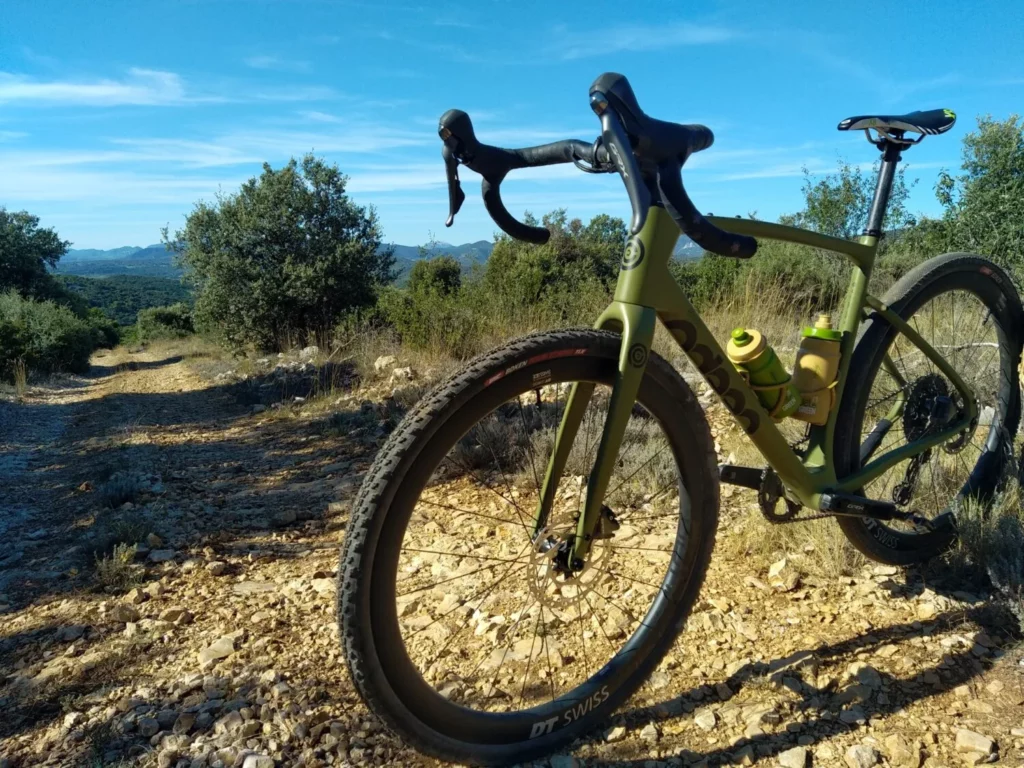
The roller
Following some peripheral adjustments, I mount the Japanese-built Ceepo Rindo. My initial observation is that the L frame feels slightly oversized. Despite falling within the recommended size range, I believe opting for the size below would have provided a more comfortable fit. Once properly adjusted, the riding position displays versatility, aligning with the previously noted stack value.
Regarding the Ritchey Comp ErgoMax aluminum handlebars, they aptly met our requirements. Their modest flare allows for consistent positions, conducive to road riding and wrist comfort. The handlebar drop is well designed; however, I found the bars to be excessively rigid, a characteristic that might benefit from some flexibility in my opinion.
The DT SWISS GRC 1400 SPLINE wheels seamlessly align with the art of acceleration and blend harmoniously with this frame, which undeniably caters to an exceedingly sporty riding style. Personally, I’m truly impressed by the all-encompassing capabilities of these wheels, despite their 42 mm height. They’ve proven to be both delightful and highly effective across a diverse array of terrains.
Moreover, the bottom bracket area exhibits unwavering stability, faithfully translating the muscularly invested watts into the drivetrain. This same level of precision extends to the lateral stiffness, which remains impervious to critique.
When traversing deteriorated road surfaces and tackling rugged tracks, the level of comfort is notably firm but within acceptable bounds. The rear triangle displays a spirited and performance-driven character. Conversely, the front end surpasses expectations and delivers exceptional performance. The precision of the head tube and fork assembly is akin to a surgical instrument, demonstrating unwavering rigidity.
The “technical” part
Aligned with its austere character and the overall rigidity previously highlighted, the Ceepo Rindo demands substantial expertise when aiming for high speeds on uneven tracks and trails. Once the terrain deteriorates, foresight becomes essential as the Rindo doesn’t offer much forgiveness to its rider. Traction, unfortunately, isn’t a standout feature of the Rindo. While not a crippling issue, it does require consideration. Riders must adopt a stance conducive to navigating challenging terrains, along with tire inflation pressures that align with tubeless mounting for optimal performance.
The same level of precision and rigidity experienced on the road extends to off-road excursions with the Ceepo Rindo. In this domain as well, the Rindo doesn’t provide much leeway for errors. In this regard, the Rindo’s fork evokes memories of the initial 3T LUTEUS forks – undeniably precise but perhaps a touch too rigid for versatile Gravel riding. Nevertheless, its relatively narrow steering angle facilitates quick changes of direction, which is ideal for lively solo rides. However, this agility comes at the expense of stability, as the 60 mm offset can’t entirely compensate for this trade-off.
Under such conditions, the rear triangle’s capacity for absorption is likewise restricted. The flex in the seatstays and seatpost, in this context, doesn’t stand out prominently. In summary, the Ceepo Rindo’s vertical absorption capabilities are akin to its lateral stiffness – they both lean towards the rigid side, much like the concept of justice itself!
To sum up
In essence, Ceepo made a commendable move by adding a Gravel bike to their lineup. Thanks to its definite dynamic and aerodynamic qualities, this bike can efficiently participate in a race, provided the course is predominantly flat and fast. Meticulous in its construction and finishing, the Ceepo Rindo may not be the most comfortable or versatile option in its category, not by a long shot. Ceepo appears to have erred on the side of caution in the Rindo’s design. A bolder and more contemporary geometry could have expanded the horizons of this impressive bike.
In the end, the Rindo primarily caters to those who are unwilling to sacrifice much, if anything, on the road. It appeals to those who relish speed in general and shy away from the most rugged trails. Ultimately, the Ceepo Rindo retains its triathlete DNA: swift, earnest, but not necessarily inclined towards playful adventures.
Ceepo Rindo features
- Frame: carbon (Japan Toray®)
- Fork: carbon (Japan Toray®)
- Transmission: Shimano GRX RX810 (11 speeds)
- Wheels: DT SWISS GRC 1400 SPLINE
- Tires: IRC BOKEN 700×40 (rear) and IRC DoubleCross 700×42 (front)
- Seatpost: TOKEN carbon Ø27.2 mm
- Seat clamp: TOKEN
- Saddle: Prologo Nago Evo X8
- Handlebars: Ritchey Comp Ergomax
- Stem: FSA SMR System
- Fork pivot: 1 1/2 – 1 1/2
- Rear axle: 12×142 mm
- Front axle: 12×100 mm
- Bottom bracket: Press-Fit format 41×86.5 mm
- Crankset: Shimano GRX FC-RX810 40 teeth
- Max/Min front disc dimensions: 160/140 mm
- Max/Min rear disc dimensions: 160/140 mm
- Brake discs: Shimano SM-RT70 CL
- Brake calipers: Shimano BR-RX810
- Max. tire width recommended by Ceepo: 45 mm
- Rear derailleur: Shimano GRX RD-RX810
- Front derailleur: compatible
- Cassette: Shimano M8000 11-42 (11v)
- Levers: Shimano GRX ST-RX810
- Chain: KMC
- Weight: approx. 8.8 kg (verified in size L for this test specimen)
- Frame kit weight: 1020 g in size M; fork 450 g
- Sizes offered: 43(XS)/ 46(S) / 49(M) / 52(L) / 56(XL)
- Manufacturer info : CEEPO BIKE | RINDO
You might want to read also: Review of the Ozone 500 Ultra Shock 26″ Bicycle


